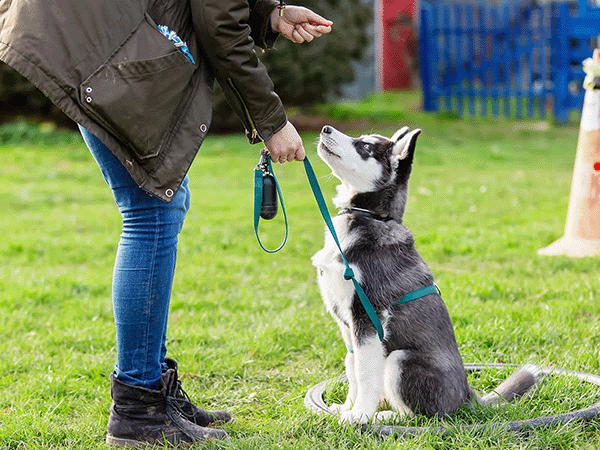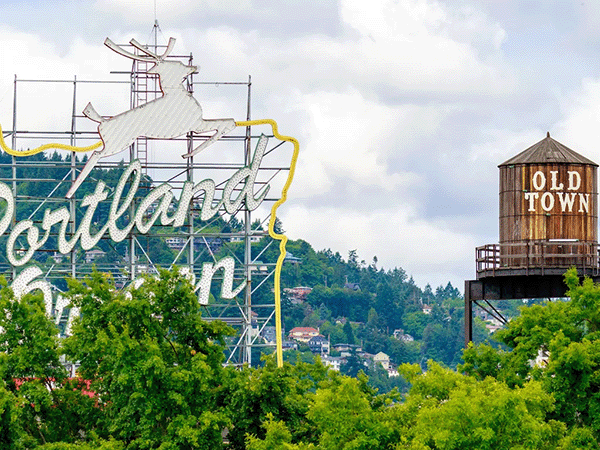Potty Training an Adult Dog: A Comprehensive Guide

Maybe you just brought home a new rescue who’s never lived indoors before—or your older pet still has the occasional (or perhaps more frequent) accident inside your home. Whatever the cause of your potty training woes, we’re here to help!
Old dogs can learn new tricks, and this guide will send you on your way to a cleaner house in no time. Let’s dive in!
First: Try to identify the root cause of your dog’s accidents
The steps in this article will help you troubleshoot bad bathroom habits. It's best to understand why your dog is urinating or defecating indoors before you dive into any specific training protocol.
While ongoing potty accidents are often a simple lack of training clarity or consistency, sometimes our pets are trying to tell us something more. Here are a few potential reasons your dog is using the bathroom indoors.
Is your dog really old enough to hold their bladder and bowels?
A general rule of thumb is that puppies can hold their bladders one hour for every month of age—so a four-month-old puppy can wait four hours while a six-month-old puppy can do six—up to the eight to ten hours we typically expect from adult dogs.
While this is a helpful guideline, it’s important to realize that it is an estimate. Every dog is an individual with slightly different needs! Small breeds, for example, have a harder time holding their bladders than large dogs do. (They might not be able to make it through your entire work day until they’re over a year old.)

Does your dog have a medical issue like a urinary tract infection?
Even if your dog is old enough that they should be able to hold their bladder for longer intervals, an illness might prevent them from waiting to go. A medical problem is especially likely if your dog used to be potty trained and has suddenly regressed.
Common causes of house training accidents include:
- Urinary tract infections
- Kidney or bladder stones
- Bladder inflammation
- Kidney disease
- Genital skin infections
- Diabetes
- Gastrointestinal upset
- Canine cognitive dysfunction in older dogs (often called “doggy dementia”)
If you think your dog might be suffering from any of the above, get in touch with your vet right away!

Has your dog experienced any big life transitions?
Just like us humans, our pets sometimes struggle to adjust to new situations. Your dog might be stressed out if you’ve recently:
- Moved into a new house
- Brought another dog home
- Changed your work schedule
- Lost a family member
- Experience any other life changes
In these instances, our dogs aren’t using the bathroom indoors to “get back at us”. They’re just confused and a little uncertain. Getting back on a consistent routine should clear up their accidents in no time!
Are your dog’s accidents linked to other behavioral problems like anxiety?
Sometimes our dogs experience chronic struggles with their mental health that aren’t directly linked to recent life changes. Separation anxiety, past trauma, and more can contribute to house training problems.
If you think this is your dog, don’t worry—you’re not alone! Consider setting up an appointment with a certified vet behaviorist to evaluate next steps and get back on track.
Next: Eliminate the scent of past accidents for a fresh start
Dogs have a natural instinct to relieve themselves where they’ve used the bathroom before. This means it’s important to thoroughly clean all accidents with an enzymatic cleaner to remove traces of previous markings!
Urine can have a powerful, pervasive smell to our dogs’ noses. Regular soap and water won’t cut it here.
Then: Prevent future accidents with a consistent management and training schedule
It turns out that potty training an adult dog isn’t all that different from house training a puppy—but it can take a little longer. Our older or recently adopted pets might have a long history of bad habits we need to break.
Here’s how to get your dog back on track in a better routine with a little consistency and patience!
Feed your dog at about the same time each day
If your dog eats on a regular schedule, it will be easier to predict when they need to use the bathroom. Pay attention to any extra treats you give them during the day that might increase their need to go potty.
Take your dog outside at regular intervals (and increase the time between bathroom breaks slowly)
While an adult dog’s bladder can hold more than a puppy, it’s important to start small during the training process. You want to go fully back to basics and set your pet up for success!
Take your dog outside more frequently than you think you need to at first. Slowly increase the intervals between their potty breaks only when they’ve shown they can consistently handle the previous amount of time.
To start, it’s a good idea to take your dog outside every 2-3 hours as well as shortly after they:
- Wake up in the morning or from a nap
- Finish a meal
- Play (especially if they drink a lot of water to cool down)
Encourage your dog to potty in the same area to create a predictable pattern
Remember when we said that dogs are inclined to use the bathroom in the same spot they’ve gone before? You can use this to your advantage outside! Try walking your dog in a small circle in the same corner of your yard to encourage a healthy habit of eliminating there.
Use positive reinforcement when your dog gets it right
When your dog potties outside, praise and reward them! You can use small training treats, physical affection, or a favorite toy to celebrate their job well done.
(Note: Wait until after your dog has finished eliminating so you don’t interrupt them in the act. You want to make sure they have time to fully empty their bladder, which can take more than 30 seconds, before offering a tasty treat or fun game.)
Keep your dog in a crate or pen when you’re unable to supervise
Canines generally don't like to use the bathroom where they sleep or eat. By confining your dog to a smaller space (like a comfortable, appropriately sized kennel or wire pen), you can take advantage of this natural instinct to reduce the odds of accidents while you’re away.
Is your dog uncomfortable with confinement in a crate, or have you just never used one before? You can read more about kennel training an adult dog in this article!You can also consider setting up designated potty pads in your dog’s environment if you have to leave them alone longer than you think they can hold their bladder.

Pay attention to your dog’s subtle signals (or consider teaching them a specific way to ask)
If your dog has to use the bathroom, they might:
- Pace, circle, or lie down near the door
- Paw at the door
- Sniff in circles
- Lick their hindquarters
- Bark or whine
- Retreat to a hiding spot
Every canine gives slightly different signals. Over time, you can learn to recognize your own dog’s tells and take them for a potty break before they’re pushed to go indoors.
Subtle signs not enough? You can also consider training your dog to do a specific behavior, like ring a bell or bark near the door, in order to be let outside! This can work especially well for quiet, stoic dogs who aren’t likely to let you know about their bladder needs on their own.
What if your dog won’t go when you take them outside?
If your dog seems unwilling to use the bathroom when you take them outside for a potty break, you can do a few things:
- Wait them out. Sometimes our pets are too distracted by interesting smells or sounds from neighboring yards to get down to business right away. Stay still in one spot, and be patient!
- Bring them back inside and put them inside their crate. Wait a few minutes and take them out again, repeating until they finally go.
- Get in touch with your vet. It’s possible that using the bathroom is uncomfortable for your dog, and a physical exam might help solve the problem.
What to do if your dog has a house training accident
Even if you’re doing everything right, accidents happen. No person (or dog) is perfect! Here’s how to bounce back quickly if your dog uses the bathroom inside.
If you catch your dog in the act
If your dog starts to use the bathroom in front of you, gently interrupt and immediately take them outside. When they finish eliminating in their designated spot in your yard, praise them!
Be careful not to yell or scare your dog. You don’t want them to feel nervous about using the bathroom in front of you even when you’re outside—you just want to remind them that pottying doesn’t happen in the house.
If you find the accident later
If you don’t discover an accident until after the fact, don’t say anything to your dog. They won’t be able to make the connection between their previous behavior and your current response. Any scolding will only confuse them!
Clean it up, return to basics, and trust the process
Clean up any potty spots with an enzymatic cleaner and take a deep breath. You’ve got this. Make sure everyone in your household is on the same page about your new house training schedule, and consider decreasing the intervals between bathroom breaks until your dog gets the hang of it.
House training can be tough—but we pet parents are tougher!
We know how difficult it is to enter a room only to be greeted by a big, smelly accident. Potty training struggles can take a toll on our own stress levels, routines, and homes. We promise the process is worth it in the end.
If you and your dog are really struggling? Consider reaching out to a force-free trainer for more help. You have a whole team cheering for you!
Trainer that reviewed this article
There is so much misinformation out there, we want to make sure we only provide the highest quality information to our community. We have all of our articles reviewed by qualified, positive-only trainers. The trainers that review our content are reviewed by other trainers to ensure that we have the best quality filters on our content.
This is the trainer that reviewed this article:
Emily Fitzpatrick
VSA-CDT
Owner and Head Trainer | Misunderstood Mutt
Most recent articles
Related articles
Top dog guides per area
Dog training guides

Dog Food Aggression: Why You Shouldn't Punish It
Does your dog ever growl when you walk by their food dish? Maybe they get possessive of treats, carrying them far away and giving you side-eye when you start to approach — or snarling at your other pets or children if they get too close.

Best Dog Fields in the US: 25+ Wide-Open Spaces for Your Pup to Run Free
The best dog fields in the US offer something that traditional enclosed parks simply can't match: acres of open space where your pup can truly stretch their legs and run at full speed. From Colorado's 470-acre prairie meadows to Tennessee's award-winning "Outback," these wide-open spaces allow dogs to roam, explore, and exercise naturally while engaging instincts that cramped urban parks suppress.

The Ultimate Guide to Scent Training for Dogs
Your dog's nose is an amazing tool. Did you know they have 40 times the olfactory receptors than humans? Scent training for dogs taps into this superpower, turning everyday moments into exciting sniff-fests. It's enriching for all types of dogs – reactive, shy, or simply adventurous. Ready to explore the world of scent work for dogs? Let's get started.

Service Dog Training Costs: DIY vs. Pro
More than 80 million Americans rely on their service dogs to help them navigate the world. Task-trained assistance animals perform a huge range of life-changing—in many cases, life-saving—services: These dogs act as eyes for visually impaired handlers, provide mobility support, alert to seizures and blood sugar crashes, interrupt anxiety attacks, remind their people to take medications, and so much more.

How to Deal With Puppy Potty Training Regression
You thought those dreaded middle-of-the-night potty breaks were over. You were finally free from cleaning up puppy puddles. Then, suddenly, your furry friend starts having accidents again. It's frustrating, right? This puppy potty training regression is more common than you think. Don't worry; we'll help you get your pup back on track. We'll cover the common causes, offer practical solutions, and give you actionable steps to tackle this challenge together.

Dirty Dog Syndrome: Causes, Solutions, and Prevention
It's a cringe-worthy moment every dog owner dreads: your furry friend chowing down on something truly disgusting. If your dog has a penchant for poop, you're dealing with coprophagia. It's more common than you think, and thankfully, often manageable. This article explores the reasons behind dirty dog syndrome, from instinct to learned behavior. We'll also give you practical tips to help break this unpleasant habit.

How to Train Your Rescue Dog: A Complete Guide
* All Sniffspot articles are reviewed by certified trainers for quality, please see bottom of article for details *
Dog enrichment guides

Best Dog Water Parks in the US: 15+ Amazing Splash Destinations for Your Pup
Do you have a water-loving dog looking to burn some energy? There are countless dog parks to visit throughout our country — but some of them become far too hot in the midday sun to be safe for your pets to play. That’s why we’ve put together a list of some of the best dog water parks throughout the United States! At these locations, your pup can frolic, splash, and swim to their heart’s content.

Best Dog Fields in the US: 25+ Wide-Open Spaces for Your Pup to Run Free
The best dog fields in the US offer something that traditional enclosed parks simply can't match: acres of open space where your pup can truly stretch their legs and run at full speed. From Colorado's 470-acre prairie meadows to Tennessee's award-winning "Outback," these wide-open spaces allow dogs to roam, explore, and exercise naturally while engaging instincts that cramped urban parks suppress.

Best Toys for Herding Dogs: Keeping Your Pup Happy & Engaged
Herding dogs are amazing, intelligent companions. But that also means they need more than just a simple game of fetch. Finding the right toys for herding dogs is key to keeping them happy and stimulated. This article explores some of the best toys for herding dogs, including options specifically for breeds like Border Collies and Australian Shepherds. We'll help you discover the perfect herding toys for dogs to tap into their natural instincts and keep them entertained for hours.

Tough Dog Toys for Aggressive Chewers: A Practical Guide
Does your dog destroy every toy you give them? Is your house littered with the remnants of plush toys? Are you tired of wasting money on "indestructible" dog toys for aggressive chewers that don't last? Then this post is for you. We'll cover everything you need to know about finding the best dog toys for aggressive chewers, so you can finally give your pup something safe, durable, and fun.

Daily Exercise Calculator: How Much Exercise Does Your Dog Need?
Everyone knows dogs need exercise, but how much is enough? Walks are great, but creating a truly balanced fitness plan means understanding your dog's specific needs. This post helps you develop a daily exercise calculator for your dog, considering breed, age, and lifestyle. We'll cover fun activities, understanding exercise intensity, and recognizing when your pup has had enough. Let's create a plan that keeps your dog happy and healthy!

Complete Guide To Herding With Dogs
* All Sniffspot articles are reviewed by certified trainers for quality, please see bottom of article for details *

Dog Enrichment Activities: The Ultimate Guide
Ever feel like your dog is restless or bored? They may be getting enough exercise, but still need more. That's where enrichment activities for dogs come in. Giving your dog opportunities to sniff, explore, and problem-solve can make a world of difference. Whether you have a puppy, adult, or senior dog, enriching their environment is key for their well-being. Let's explore how to add cognitive enrichment for dogs, even tailoring activities to your dog's breed with breed specific enrichment and fun enrichment games for dogs.
Dog reactivity guides

Rottweiler Aggression: Truth vs. Myth
Many dogs have gotten a bad reputation over the years for being "dangerous breeds." Rottweilers are among them. Like pit bulls and other large, blocky-headed types of dogs, these powerful and beautiful animals are often assumed to be aggressive.

Best Dog Fields in the US: 25+ Wide-Open Spaces for Your Pup to Run Free
The best dog fields in the US offer something that traditional enclosed parks simply can't match: acres of open space where your pup can truly stretch their legs and run at full speed. From Colorado's 470-acre prairie meadows to Tennessee's award-winning "Outback," these wide-open spaces allow dogs to roam, explore, and exercise naturally while engaging instincts that cramped urban parks suppress.

What Is a Reactive Dog? A Practical Guide for Owners
Does your dog suddenly transform into a barking, lunging Tasmanian devil on walks? It's stressful for both of you. If this sounds familiar, you might have a reactive dog. Understanding what is a reactive dog is the first step to calmer walks. We'll explore the common triggers and give you actionable strategies to manage and modify this behavior. Let's turn those stressful walks into enjoyable outings.

How to Socialize a Reactive Dog: A Step-by-Step Guide
Does your dog display reactivity to other pets or people? Maybe they’re a new rescue pup and are still settling into your home. Or they were sick growing up, so you missed their critical socialization period. Possibly they’ve had a bad experience after being raised as a normal puppy.

What Is a Reactive Dog? A Complete Guide
Is your dog overly excited or fearful around other dogs? Do they bark, lunge, or whine? You might have a reactive dog. Many dog owners face this challenge. Understanding what a reactive dog is is the first step to helping them. This guide explores the common causes of dog reactivity, explains what makes a dog reactive, and offers practical tips and resources. Let's work together to build a stronger bond with your dog and enjoy stress-free walks.

9 Best Online Communities for Reactive Dog Parents
Does your dog's reactivity make walks stressful? You're not alone. Many dog owners face similar challenges. This guide offers practical advice and support for managing reactivity, including finding the best online dog training for reactive dogs. We'll connect you with reactive dog support groups, share training tips, and explore resources like the best dog training app for reactive dogs. Let's build a stronger bond with your dog, together.
* All Sniffspot articles are reviewed by certified trainers for quality, please see bottom of article for details *
How To Groom a Reactive Dog
* All Sniffspot articles are reviewed by certified trainers for quality, please see bottom of article for details *
Sniffspot community guides

The State of Public Dog Parks Across the United States
From 2009 to 2020, there was a 40 percent increase in the development of public dog parks. Designated spots for canine exercise have become commonplace in every major city in North America — many pet owners won’t even consider renting an apartment that doesn’t have its own fenced-in pet area for their canine companions.

Best Dog Fields in the US: 25+ Wide-Open Spaces for Your Pup to Run Free
The best dog fields in the US offer something that traditional enclosed parks simply can't match: acres of open space where your pup can truly stretch their legs and run at full speed. From Colorado's 470-acre prairie meadows to Tennessee's award-winning "Outback," these wide-open spaces allow dogs to roam, explore, and exercise naturally while engaging instincts that cramped urban parks suppress.

How This Family is Affording Their Dream Property Through Renting it Hourly to Dogs
Thousand Oaks, California has been a safe haven for Sniffspot host, Jen, since childhood. Having grown up in busy Santa Barbara, Jen, an introvert from an early age, would seek out solitude and serenity away from tourists attractions and droves of people visiting from elsewhere. “My grandparents own 60 acres about a 30 minute drive from here, and I grew up spending every summer and every holiday visiting them on the ranch,” Jen explained. “In Santa Barbara, we wouldn't go to the beach on the weekend because that's where everybody was, so you'd find places off the beaten path where the tourists weren't. For me, the ranch was just my happy place.”

Host Tips: Ellen K. What Makes Sniffspot Successful for Me
Ellen is the host of Country Pasture Getaway, one of Sniffspot's most popular sniff spots. She has taken the time to write up the lessons she has learned about how to be a great sniff spot host.

How this Oregon Farmer is Making a Business From Renting Her Land to Dogs
Just 20 minutes outside of the busy city of Portland, Oregon, and settled right on the banks of the Columbia River, you’ll find what countless visitors have flocked to the area in search of – mountain views, crisp, clean air, and running water for miles. What you might not expect to find, however, is a hidden oasis designed just for dogs and their people, owned and operated by a farming couple and enjoyed by visitors on two legs, and four.

Host Tips: Fran T. Providing Great Guest Service at our Spot
Fran is the host of Ranch Setting, one of Sniffspot's most popular spots. She has taken the time to write up the lessons she has learned about how to be a great Sniffspot host.

How Sniffspot Helped a Nervous Rescue Work Through His Fears and Change His Family’s Life
This is the story of a family and dog rescuing each other.
Top dog trainers in the US

The Best Dog Trainers in the United States of 2025
This is a list of the top dog trainers in the United States, based on votes from the Sniffspot community and the general public.
The Best Dog Trainers in Seattle, WA of 2025
This is a list of the top dog trainers in Seattle, WA, based on votes from the Sniffspot community and the general public.
The Best Dog Trainers in Portland, OR of 2025
This is a list of the top dog trainers in Portland, OR, based on votes from the Sniffspot community and the general public.
The Best Dog Trainers in Los Angeles, CA of 2025
This is a list of the top dog trainers in Los Angeles, CA, based on votes from the Sniffspot community and the general public.
The Best Dog Trainers in New York, NY of 2025
This is a list of the top dog trainers in New York, NY, based on votes from the Sniffspot community and the general public.
City dog parks guides

Top 10 Indoor Dog Parks: A US Guide
Looking for a space to play with your dog no matter what the weather’s like outside? Look no further than our list of the best indoor dog parks in the United States! These climate-controlled spaces are growing in popularity as pet ownership increases throughout the country. As a bonus, many of them also offer dog training, boarding, grooming, or daycare services on the premises.

Best Dog Fields in the US: 25+ Wide-Open Spaces for Your Pup to Run Free
The best dog fields in the US offer something that traditional enclosed parks simply can't match: acres of open space where your pup can truly stretch their legs and run at full speed. From Colorado's 470-acre prairie meadows to Tennessee's award-winning "Outback," these wide-open spaces allow dogs to roam, explore, and exercise naturally while engaging instincts that cramped urban parks suppress.

Best Dog Parks in the US: Ultimate Guide to Public & Private Off-Leash Adventures
Is your pup giving you those pleading "let me run free" eyes? Whether you're a new dog parent or a seasoned pro looking for fresh adventures, finding the perfect off-leash paradise for your furry friend can feel ruff! From sun-soaked California beaches where your water-loving lab can make a splash to mountain trails in Vermont where your adventure buddy can chase every scent, we've sniffed out the 15 best dog parks across America.

Dog Parks Near Me: Las Vegas Edition
Looking for the perfect dog park near me in Las Vegas? You're in luck! This guide explores all the best options for your pup, from public dog parks to private dog parks near me on Sniffspot. We'll help you find the ideal spot for playtime, socializing, and fresh air. Plus, we'll cover essential etiquette and safety tips to ensure a happy visit for everyone. Get ready for some tail-wagging fun!

Top Sniffspot Locations: Find the Perfect Dog Park
Looking for the perfect dog park? Whether you need a wide-open public space or a private, fenced-in spot, this guide will help you find the best dog parks across the US. We'll cover top-rated public parks, the perks of private dog parks, and even explore Sniffspot locations – giving your pup a safe and fun place to play. Ready to find your dog's new favorite spot? Let's go!

Sniffspot: Portland's Best Private Dog Parks
Ready to discover Portland's best dog parks? Whether you're looking for a public park or the unique experience of a private Sniffspot, this guide has you covered. We'll help you find the perfect spot for your pup, with tips on what to bring, how to prepare, and even understanding dog body language. Plus, we'll explore some top Portland dog parks, including public and Sniffspot options, so you can plan your next dog-friendly adventure in the City of Roses.
Portland Dog Parks: Public & Private Options
This page is about public city dog parks and also includes Sniffspot private dog parks. Sniffspot is the largest network of private dog parks for rent in the world!
Small Dog Park Guide: Tips for Finding the Perfect Spot
Finding the perfect dog park for your small breed can be ruff! Big dog parks can be overwhelming, even dangerous, for little pups. This comprehensive guide helps you sniff out the best small dog parks for your pint-sized companion, covering everything from essential safety checklists to top recommendations for small dog parks across the US—including both public spots and private dog parks.
Dogs breeds

German Shepherd Dogs: Insights From Real Dog Owners
The German Shepherd Dog (GSDs) are known for their intelligence, loyalty, and striking appearance. They're also incredibly versatile, excelling as working dogs and devoted family companions. This guide covers everything you need to know about GSDs, from understanding their unique traits and rich history to practical advice on training and care. So, whether you're a seasoned GSD owner or just starting your research, let's explore this remarkable breed together.

Best Dog Fields in the US: 25+ Wide-Open Spaces for Your Pup to Run Free
The best dog fields in the US offer something that traditional enclosed parks simply can't match: acres of open space where your pup can truly stretch their legs and run at full speed. From Colorado's 470-acre prairie meadows to Tennessee's award-winning "Outback," these wide-open spaces allow dogs to roam, explore, and exercise naturally while engaging instincts that cramped urban parks suppress.

Labrador Retriever: Ultimate Guide by Owners
Discover the Labrador Retriever, a breed celebrated for its playful nature, affectionate temperament, and trainability. Labradors are known for their friendly demeanor and adaptability, making them perfect family companions and versatile working dogs. As one of the most popular types of retrievers, Labs are ideal companions for various lifestyles and are recognized by the American Kennel Club (AKC) as an excellent breed for families.

Golden Retriever Advice: The Complete Owner's Guide
Golden Retrievers: they're gorgeous, playful, and incredibly popular. But before you welcome one into your home, you need the right golden retriever advice. This guide draws on the wisdom of nearly 10,000 Golden Retriever owners, offering practical tips for caring for these affectionate dogs. From understanding their high energy levels to mastering grooming and training, we'll cover everything you need to know. So whether you're already a devoted Golden parent or just starting your research, get ready to learn how to give your furry friend the best possible care.

American Staffordshire Terrier: Your Complete Guide
Think American Staffordshire Terriers are tough? Think again. While their muscular build might intimidate some, these dogs are known for their playful and loyal personalities. This guide draws on the experience of nearly 10,000 AmStaff owners to reveal the truth about this often misunderstood breed. Want to learn more about caring for an American Staffordshire Terrier? You're in the right place.

Australian Shepherd Facts: Breed Info & Care Guide
Discover the Australian Shepherd, an AKC breed celebrated for its trainable, playful, and affectionate nature. Despite its name, the Australian Shepherd is actually a native breed to the United States, originally developed to breed on farms and ranches. Considered a medium dog, Australian Shepherds were bred for herding beginning in the 1950s. As one of the high-energy breeds, Aussies are known for their boundless energy and need for regular exercise, including aerobic exercise.

Essential Husky Facts for Owners: Breed Guide
Discover the Siberian Husky, a breed celebrated for its curious, intelligent, and loyal nature. Considered a medium-sized dog, Siberian Huskies were originally bred in Russia for sledding, beginning in the early 20th Century. Today, they're one of the most popular active breeds in North America.



























